- Home
- Edgar Allan Poe
CRITICISM Page 20
CRITICISM Read online
Page 20
To return to equality. Its idea embraces those of similarity, proportion, identity, repetition, and adaptation or fitness. It might not be very difficult to go even behind the idea of equality, and show both how and why it is that the human nature takes pleasure in it, but such an investigation would, for any purpose now in view, be supererogatory. It is sufficient that the fact is undeniable- the fact that man derives enjoyment from his perception of equality. Let us examine a crystal. We are at once interested by the equality between the sides and between the angles of one of its faces; the equality of the sides pleases us, that of the angles doubles the pleasure. On bringing to view a second face in all respects similar to the first, this pleasure seems to be squared; on bringing to view a third it appears to be cubed, and so on. I have no doubt, indeed, that the delight experienced, if measurable, would be found to have exact mathematical relation such as I suggest, that is to say, as far as a certain point, beyond which there would be a decrease in similar relations.
The perception of pleasure in the equality of sounds is the principle of Music. Unpractised ears can appreciate only simple equalities, such as are found in ballad airs. While comparing one simple sound with another they are too much occupied to be capable of comparing the equality subsisting between these two simple sounds taken conjointly, and two other similar simple sounds taken conjointly. Practised ears, on the other hand, appreciate both equalities at the same instant, although it is absurd to suppose that both are heard at the same instant. One is heard and appreciated from itself, the other is heard by the memory, and the instant glides into and is confounded with the secondary appreciation. Highly cultivated musical taste in this manner enjoys not only these double equalities, all appreciated at once, but takes pleasurable cognizance, through memory, of equalities the members of which occur at intervals so great that the uncultivated taste loses them altogether. That this latter can properly estimate or decide on the merits of what is called scientific music is of course impossible. But scientific music has no claim to intrinsic excellence; it is fit for scientific ears alone. In its excess it is the triumph of the physique over the morale of music. The sentiment is overwhelmed by the sense. On the whole, the advocates of the simpler melody and harmony have infinitely the best of the argument, although there has been very little of real argument on the subject.
In verse, which cannot be better designated than as an inferior or less capable Music, there is, happily, little chance for complexity. Its rigidly simple character not even Science- not even Pedantry can greatly pervert.
The rudiment of verse may possibly be found in the spondee. The very germ of a thought seeking satisfaction in equality of sound would result in the construction of words of two syllables, equally accented. In corroboration of this idea we find that spondees most abound in the most ancient tongues. The second step we can easily suppose to be the comparison, that is to say, the collocation of two spondees- or two words composed each of a spondee. The third step would be the juxtaposition of three of these words. By this time the perception of monotone would induce further consideration; and thus arises what Leigh Hunt so flounders in discussing under the title of "The Principle of Variety in Uniformity." Of course there is no principle in the case- nor in maintaining it. The "Uniformity" is the principle- the "Variety" is but the principle's natural safeguard from self-destruction by excess of self. "Uniformity," besides, is the very worst word that could have been chosen for the expression of the general idea at which it aims.
The perception of monotone having given rise to an attempt at its relief, the first thought in this new direction would be that of collating two or more words formed each of two syllables differently accented (that is to say, short and long) but having the same order in each word- in other terms, of collating two or more iambuses, or two or more trochees. And here let me pause to assert that more pitiable nonsense has been written on the topic of long and short syllables than on any other subject under the sun. In general, a syllable is long or short, just as it is difficult or easy of enunciation. The natural long syllables are those encumbered- the natural short syllables are those unencumbered with consonants; all the rest is mere artificiality and jargon. The Latin Prosodies have a rule that a "vowel before two consonants is long." This rule is deduced from "authority"- that is, from the observation that vowels so circumstanced, in the ancient poems, are always in syllables long by the laws of scansion. The philosophy of the rule is untouched, and lies simply in the physical difficulty of giving voice to such syllables- of performing the lingual evolutions necessary for their utterance. Of course, it is not the vowel that is long (although the rule says so), but the syllable of which the vowel is a part. It will be seen that the length of a syllable, depending on the facility or difficulty of its enunciation, must have great variation in various syllables; but for the purposes of verse we suppose a long syllable equal to two short ones, and the natural deviation from this relativeness we correct in perusal. The more closely our long syllables approach this relation with our short ones, the better, ceteris paribus, will be our verse: but if the relation does not exist of itself we force it by emphasis, which can, of course, make any syllable as long as desired;- or, by an effort we can pronounce with unnatural brevity a syllable that is naturally too long. Accented syllables are, of course, always long, but where unencumbered with consonants, must be classed among the unnaturally long. Mere custom has declared that we shall accent them- that is to say, dwell upon them; but no inevitable lingual difficulty forces us to do so. In fine, every long syllable must of its own accord occupy in its utterance, or must be made to occupy, precisely the time demanded for two short ones. The only exception to this rule is found in the caesura- of which more anon.
The success of the experiment with the trochees or iambuses (the one would have suggested the other) must have led to a trial of dactyls or anapaests- natural dactyls or anapaests- dactylic or anapaestic words. And now some degree of complexity has been attained. There is an appreciation, first, of the equality between the several dactyls or anapaests, and secondly, of that between the long syllable and the two short conjointly. But here it may be said, that step after step would have been taken, in continuation of this routine, until all the feet of the Greek Prosodies became exhausted. Not so; these remaining feet have no existence except in the brains of the scholiasts. It is needless to imagine men inventing these things, and folly to explain how and why they invented them, until it shall be first shown that they are actually invented. All other "feet" than those which I have specified are, if not impossible at first view, merely combinations of the specified; and, although this assertion is rigidly true, I will, to avoid misunderstanding, put it in a somewhat different shape. I will say, then, that at present I am aware of no rhythm- nor do I believe that any one can be constructed- which, in its last analysis, will not be found to consist altogether of the feet I have mentioned, either existing in their individual and obvious condition, or interwoven with each other in accordance with simple natural laws which I will endeavour to point out hereafter.
We have now gone so far as to suppose men constructing indefinite sequences of spondaic, iambic, trochaic, dactylic, or anapaestic words. In extending these sequences, they would be again arrested by the sense of monotone. A succession of spondees would immediately have displeased; one of iambuses or of trochees, on account of the variety included within the foot itself, would have taken longer to displease, one of dactyls or anapaests, still longer; but even the last, if extended very far, must have become wearisome. The idea first of curtailing, and secondly of defining, the length of a sequence would thus at once have arisen. Here then is the line of verse proper.* The principle of equality being constantly at the bottom of the whole process, lines would naturally be made, in the first instance, equal in the number of their feet; in the second instance, there would be variation in the mere number; one line would be twice as long as another, then one would be some less obvious multiple of another; then still less obvious
proportions would be adoptednevertheless there would be proportion, that is to say, a phase of equality, still.
* Verse, from the Latin vertere, to turn, is so called on account of the turning or re-commencement of the series of feet. Thus a verse strictly speaking is a line. In this sense, however, I have preferred using the latter word alone; employing the former in the general acceptation given it in the heading of this paper.
Lines being once introduced, the necessity of distinctly defining these lines to the ear (as yet written verse does not exist), would lead to a scrutiny of their capabilities at their terminations- and now would spring up the idea of equality in sound between the final syllables- in other words, of rhyme. First, it would be used only in the iambic, anapaestic, and spondaic rhythms (granting that the latter had not been thrown aside long since, on account of its tameness), because in these rhythms the concluding syllable being long, could best sustain the necessary protraction of the voice. No great while could elapse, however, before the effect, found pleasant as well as useful, would be applied to the two remaining rhythms. But as the chief force of rhyme must lie in the accented syllable, the attempt to create rhyme at all in these two remaining rhythms, the trochaic and dactylic, would necessarily result in double and triple rhymes, such as beauty with duty (trochaic), and beautiful with dutiful (dactylic).
It must be observed that in suggesting these processes I assign them no date; nor do I even insist upon their order. Rhyme is supposed to be of modern origin, and were this proved my positions remain untouched. I may say, however, in passing, that several instances of rhyme occur in the "Clouds" of Aristophanes, and that the Roman poets occasionally employed it. There is an effective species of ancient rhyming which has never descended to the moderns: that in which the ultimate and penultimate syllables rhyme with each other. For example:
Parturiunt montes; nascetur ridiculus mus. And again:
Litoreis ingens inventa sub ilicibus sus.
The terminations of Hebrew verse (as far as understood) show no signs of rhyme; but what thinking person can doubt that it did actually exist? That men have so obstinately and blindly insisted, in general, even up to the present day, in confining rhyme to the ends of lines, when its effect is even better applicable elsewhere, intimates in my opinion the sense of some necessity in the connection of the ends with the rhyme- hints that the origin of rhyme lay in a necessity which connected it with the end- shows that neither mere accident nor mere fancy gave rise to the connection-points, in a word, at the very necessity which I have suggested (that of some mode of defining lines to the ear), as the true origin of rhyme. Admit this and we throw the origin far back in the night of Time- beyond the origin of written verse.
But to resume. The amount of complexity I have now supposed to be attained is very considerable. Various systems of equalization are appreciated at once (or nearly so) in their respective values and in the value of each system with reference to all the others. As our present ultimatum of complexity, we have arrived at triple-rhymed, natural-dactylic lines, existing proportionally as well as equally with regard to other triple-rhymed, natural-dactylic lines. For example:
Virginal Lilian, rigidly, humblily dutiful;
Saintlily, lowlily,
Thrillingly, holily
Beautiful!
Here we appreciate, first, the absolute equality between the long syllable of each dactyl and the two short conjointly; secondly, the absolute equality between each dactyl and any other dactyl, in other words, among all the dactyls; thirdly, the absolute equality between the two middle lines; fourthly, the absolute equality between the first line and the three others taken conjointly, fifthly, the absolute equality between the last two syllables of the respective words "dutiful" and "beautiful"; sixthly, the absolute equality between the two last syllables of the respective words "lowlily" and "holily"; seventhly, the proximate equality between the first syllable of "dutiful" and the first syllable of "beautiful"; eighthly, the proximate equality between the first syllable of "lowlily" and that of "holily"; ninthly, the proportional equality (that of five to one) between the first line and each of its members, the dactyls; tenthly, the proportional equality (that of two to one) between each of the middle lines and its members, the dactyls, eleventhly, the proportional equality between the first line and each of the two middle, that of five to two; twelfthly, the proportional equality between the first line and the last, that of five to one; thirteenthly, the proportional equality between each of the middle lines and the last, that of two to one, lastly, the proportional equality, as concerns number, between all the lines taken collectively, and any individual line, that of four to one.
The consideration of this last equality would give birth immediately to the idea of stanza,* that is to say, the insulation of lines into equal or obviously proportional masses. In its primitive (which was also its best) form the stanza would most probably have had absolute unity. In other words, the removal of any one of its lines would have rendered it imperfect, as in the case above, where if the last line, for example, be taken away there is left no rhyme to the "dutiful" of the first. Modern stanza is excessively loose, and where so, ineffective as a matter of course.
* A stanza is often vulgarly, and with gross impropriety, called a verse.
Now, although in the deliberate written statement which I have here given of these various systems of equalities, there seems to be an infinity of complexity so much that it is hard to conceive the mind taking cognisance of them all in the brief period occupied by the perusal or recital of the stanza, yet the difficulty is in fact apparent only when we will it to become so. Any one fond of mental experiment may satisfy himself, by trial, that in listening to the lines he does actually (although with a seeming unconsciousness, on account of the rapid evolutions of sensation) recognise and instantaneously appreciate (more or less intensely as his is cultivated) each and all of the equalizations detailed. The pleasure received or receivable has very much such progressive increase, and in very nearly such mathematical relations as those which I have suggested in the case of the crystal.
It will be observed that I speak of merely a proximate equality between the first syllable of "dutiful" and that of "beautiful," and it may be asked why we cannot imagine the earliest rhymes to have had absolute instead of proximate equality of sound. But absolute equality would have involved the use of identical words, and it is the duplicate sameness or monotony, that of sense as well as that of sound, which would have caused these rhymes to be rejected in the very first instance.
The narrowness of the limits within which verse composed of natural feet alone must necessarily have been confined would have led, after a very brief interval, to the trial and immediate adoption of artificial feet, that is to say, of feet not constituted each of a single word but two, or even three words, or of parts of words. These feet would be intermingled with natural ones. For example:
A breath / can make / them as / a breath / his made. This is an iambic line in which each iambus is formed of two words. Again:
The un / ima / gina / ble might / of Jove. This is an iambic line in which the first foot is formed of a word and a part of a word; the second and third of parts taken from the body or interior of a word; the fourth of a part and a whole; the fifth of two complete words. There are no natural feet in either line. Again:
Can it be / fancied that / Deity / ever vin / dictively
Made in his / image a / mannikin / merely to / madden it?
These are two dactylic lines in which we find natural feet ("Deity," "mannikin"); feet composed of two words ("fancied that," "image a," "merely to," "madden it"); feet composed of three words, ("can it be," "made in his"); a foot composed of a part of a word ("dictively"); and a foot composed of a word and a part of a word ("ever vin").
And now, in our suppositional progress, we have gone so far as to exhaust all the essentialities of verse. What follows may, strictly speaking, be regarded as embellishment merely, but even in this embellishment th
e rudimental sense of equality would have been the never-ceasing impulse. It would, for example, be simply in seeking further administration to this sense that men would come in time to think of the refrain or burden, where, at the closes of the several stanzas of a poem, one word or phrase is repeated; and of alliteration, in whose simplest form a consonant is repeated in the commencements of various words. This effect would be extended so as to embrace repetitions both of vowels and of consonants in the bodies as well as in the beginnings of words, and at a later period would be made to infringe on the province of rhyme by the introduction of general similarity of sound between whole feet occurring in the body of a line- all of which modifications I have exemplified in the line above.
Made in his image a mannikin merely to madden it.
Further cultivation would improve also the refrain by relieving its monotone in slightly varying the phrase at each repetition, or (as I have attempted to do in "The Raven") in retaining the phrase and varying its application, although this latter point is not strictly a rhythmical effect alone. Finally, poets when fairly wearied with following precedent, following it the more closely the less they perceived it in company with Reason, would adventure so far as to indulge in positive rhyme at other points than the ends of lines. First, they would put it in the middle of the line, then at some point where the multiple would be less obvious, then, alarmed at their own audacity, they would undo all their work by cutting these lines in two. And here is the fruitful source of the infinity of "short metre" by which modern poetry, if not distinguished, is at least disgraced. It would require a high degree, indeed, both of cultivation and of courage on the part of any versifier to enable him to place his rhymes, and let them remain at unquestionably their best position, that of unusual and unanticipated intervals.

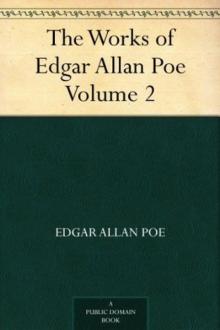 The Works of Edgar Allan Poe — Volume 2
The Works of Edgar Allan Poe — Volume 2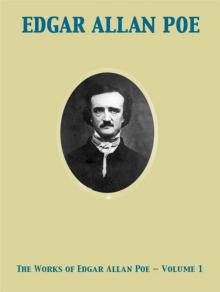 The Works of Edgar Allan Poe — Volume 1
The Works of Edgar Allan Poe — Volume 1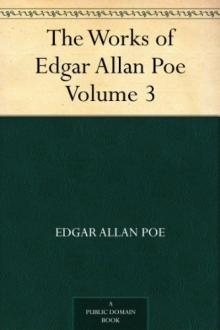 The Works of Edgar Allan Poe — Volume 3
The Works of Edgar Allan Poe — Volume 3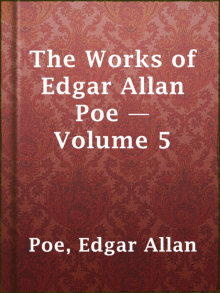 The Works of Edgar Allan Poe — Volume 5
The Works of Edgar Allan Poe — Volume 5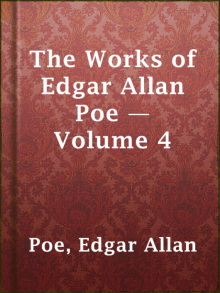 The Works of Edgar Allan Poe — Volume 4
The Works of Edgar Allan Poe — Volume 4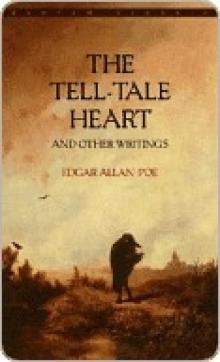 The Tell-Tale Heart
The Tell-Tale Heart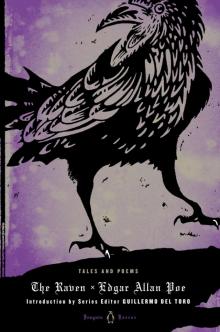 The Raven (Penguin)
The Raven (Penguin)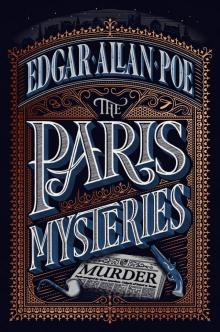 The Paris Mysteries
The Paris Mysteries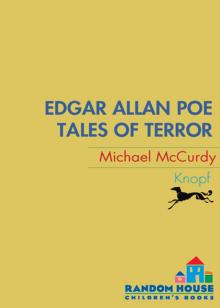 Tales of Terror from Edgar Allan Poe
Tales of Terror from Edgar Allan Poe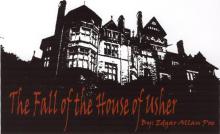 The Fall of the House of Usher
The Fall of the House of Usher The Golden Book of World's Greatest Mysteries
The Golden Book of World's Greatest Mysteries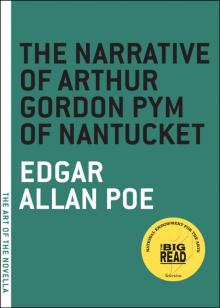 The Narrative of Arthur Gordon Pym of Nantucket
The Narrative of Arthur Gordon Pym of Nantucket Ligeia
Ligeia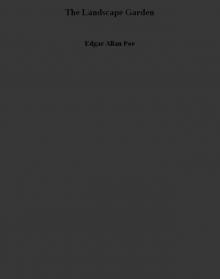 The Landscape Garden
The Landscape Garden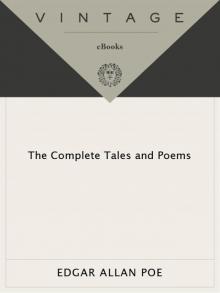 Complete Tales & Poems
Complete Tales & Poems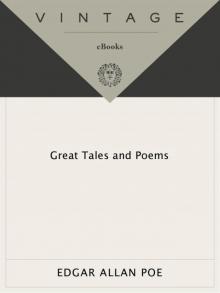 Great Tales and Poems of Edgar Allan Poe
Great Tales and Poems of Edgar Allan Poe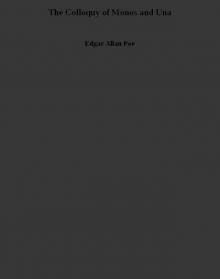 The Colloquy of Monos and Una
The Colloquy of Monos and Una The Oblong Box
The Oblong Box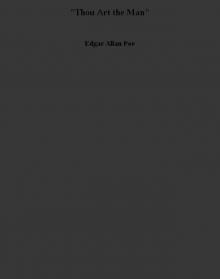 Thou Art the Man
Thou Art the Man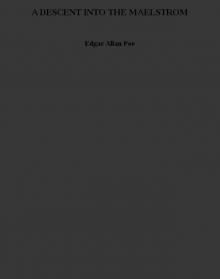 A DESCENT INTO THE MAELSTROM
A DESCENT INTO THE MAELSTROM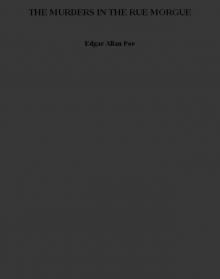 THE MURDERS IN THE RUE MORGUE
THE MURDERS IN THE RUE MORGUE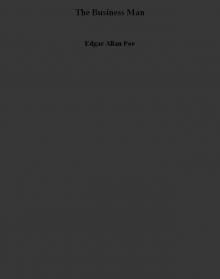 The Business Man
The Business Man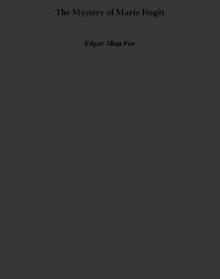 The Mystery of Marie Rogêt
The Mystery of Marie Rogêt Metzengerstein
Metzengerstein The Man That Was Used Up
The Man That Was Used Up William Wilson
William Wilson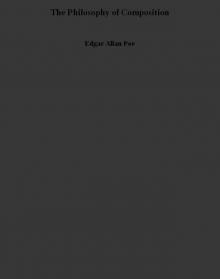 The Philosophy of Composition
The Philosophy of Composition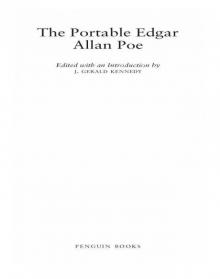 The Portable Edgar Allan Poe
The Portable Edgar Allan Poe Bon-Bon
Bon-Bon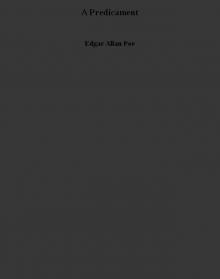 A Predicament
A Predicament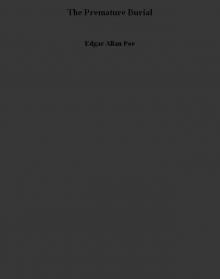 The Premature Burial
The Premature Burial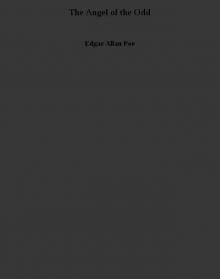 The Angel of the Odd
The Angel of the Odd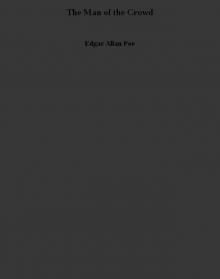 The Man of the Crowd
The Man of the Crowd Never Bet the Devil Your Head
Never Bet the Devil Your Head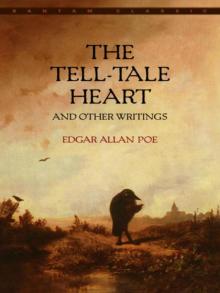 The Tell-Tale Heart and Other Writings
The Tell-Tale Heart and Other Writings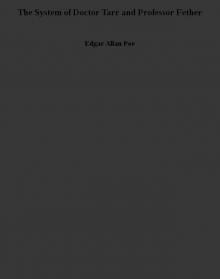 The System of Doctor Tarr and Professor Fether
The System of Doctor Tarr and Professor Fether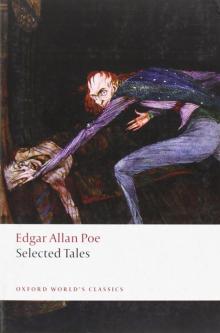 Selected Tales (Oxford World's Classics)
Selected Tales (Oxford World's Classics) Essential Tales and Poems of Edgar Allan Poe (Barnes & Noble Classics Series)
Essential Tales and Poems of Edgar Allan Poe (Barnes & Noble Classics Series) MS. Found in a Bottle
MS. Found in a Bottle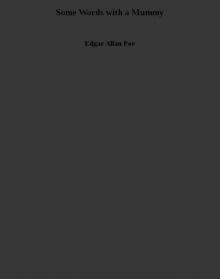 Some Words with a Mummy
Some Words with a Mummy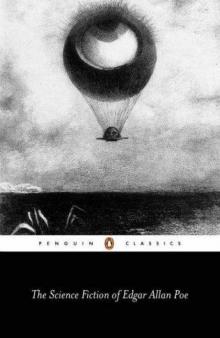 The Science Fiction of Edgar Allan Poe (Penguin Classics)
The Science Fiction of Edgar Allan Poe (Penguin Classics) King Pest
King Pest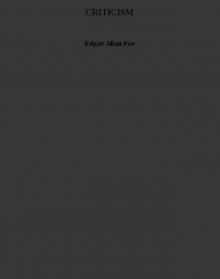 CRITICISM
CRITICISM How to Write a Blackwood Article
How to Write a Blackwood Article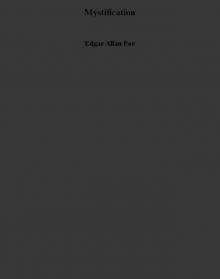 Mystification
Mystification Diddling Considered as One of the Exact Sciences
Diddling Considered as One of the Exact Sciences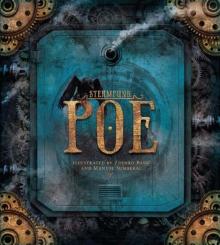 Steampunk Poe
Steampunk Poe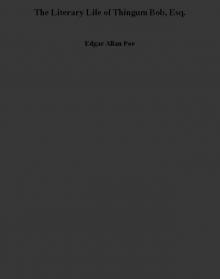 The Literary Life of Thingum Bob, Esq.
The Literary Life of Thingum Bob, Esq.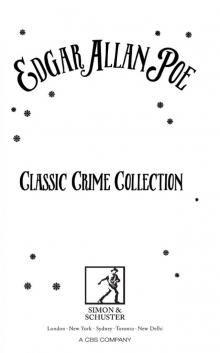 Classic Crime Collection
Classic Crime Collection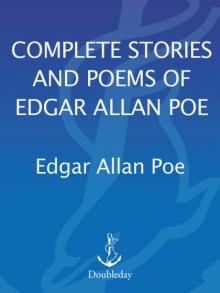 Complete Stories and Poems of Edgar Allen Poe
Complete Stories and Poems of Edgar Allen Poe Berenice
Berenice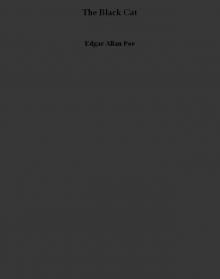 The Black Cat
The Black Cat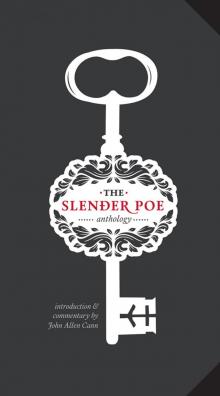 The Slender Poe Anthology
The Slender Poe Anthology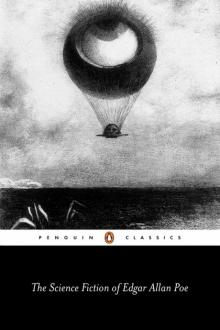 The Science Fiction of Edgar Allan Poe
The Science Fiction of Edgar Allan Poe The Assignation
The Assignation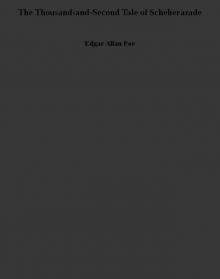 The Thousand-and-Second Tale of Scheherazade
The Thousand-and-Second Tale of Scheherazade The Raven and Other Short Stories
The Raven and Other Short Stories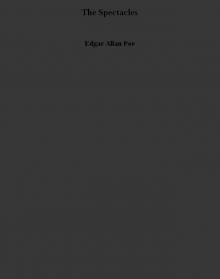 The Spectacles
The Spectacles Hop-Frog
Hop-Frog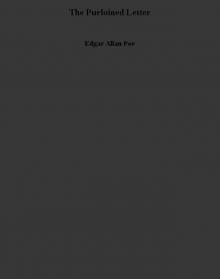 The Purloined Letter
The Purloined Letter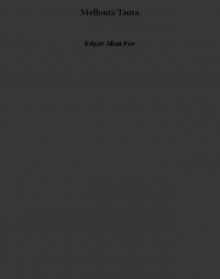 Mellonta Tauta
Mellonta Tauta The Balloon-Hoax
The Balloon-Hoax Landor's Cottage
Landor's Cottage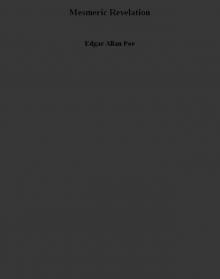 Mesmeric Revelation
Mesmeric Revelation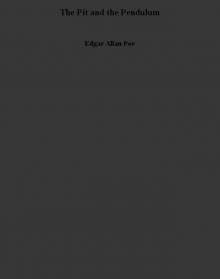 The Pit and the Pendulum
The Pit and the Pendulum